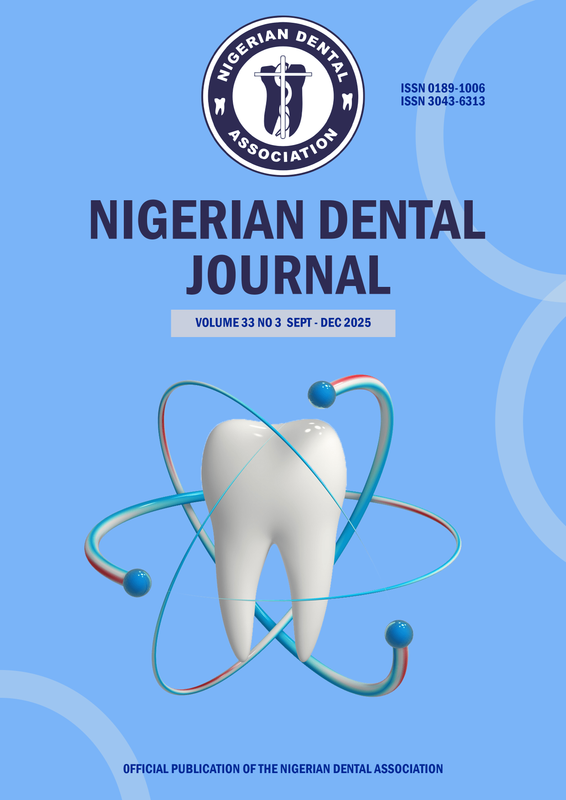Dental anxiety among patients visiting a University Dental Centre
DOI:
https://doi.org/10.61172/ndj.v19i1.134Keywords:
Dental anxiety, Dental fear, MDA Scale, PrevalenceAbstract
Objective: Fearful individuals often avoid care despite extensive dental needs and anxious patients feel more pain and of longer duration than less anxious patients. This study was designed to determine the prevalence and factors associated with dental anxiety among patients visiting a University Dental Centre in Nigeria.
Method: This cross-sectional study was conducted using an anonymous structured questionnaire randomly administered to patients attending the University College Hospital Dental Centre, Ibadan. The questionnaire requested for socio-demographic data, dental visit behaviour, history of traumatic dental treatment and level of apprehension when anticipating a visit to the dentist and physician. The level of dental anxiety was determined using the Modified Dental Anxiety Scale (MDAS). An MDAS score of 19 and above indicated high dental anxiety. Upon examination, DMFT of each patient was determined.
Result: A total of 471 respondents of which 262 (55.6%) were females participated in the study. Only 7.43% of the participants had MDAS score ≥19. About 10% of the females had high dental anxiety compared with 4.94% recorded for the males (p=0.01). Dental anxiety was more common among the younger age group, irregular oral health care seekers and among those with history of traumatic dental treatment. The respondents were more relaxed when anticipating a visit to a physician. Only gender could be used to predict high dental anxiety. Female gender significantly displayed high dental anxiety (odd ratio=3.05 and p=0.04) . The mean DMFT score for the patients was 2.48±3.30.
Conclusion: The prevalence of dental anxiety among the respondents in this study was 7.43% and only gender could be used to predict dental anxiety.
Downloads
Downloads
Published
Issue
Section
License
Copyright (c) 2011 A. O. Arigbede, D. M. Ajayi, B. F. Adeyemi, B. Kolude

This work is licensed under a Creative Commons Attribution 4.0 International License.
Open Access Statement
- We became fully Open Access since January 2023.
- Our new and archived materials are available free of charge on open basis and under a Creative Commons license as stated below.
Copyright statement
Copyright © 1999 The authors. This work, Nigerian Dental Journal by Nigerian Dental Association is licensed under Creative Commons Attribution 4.0 International License.

